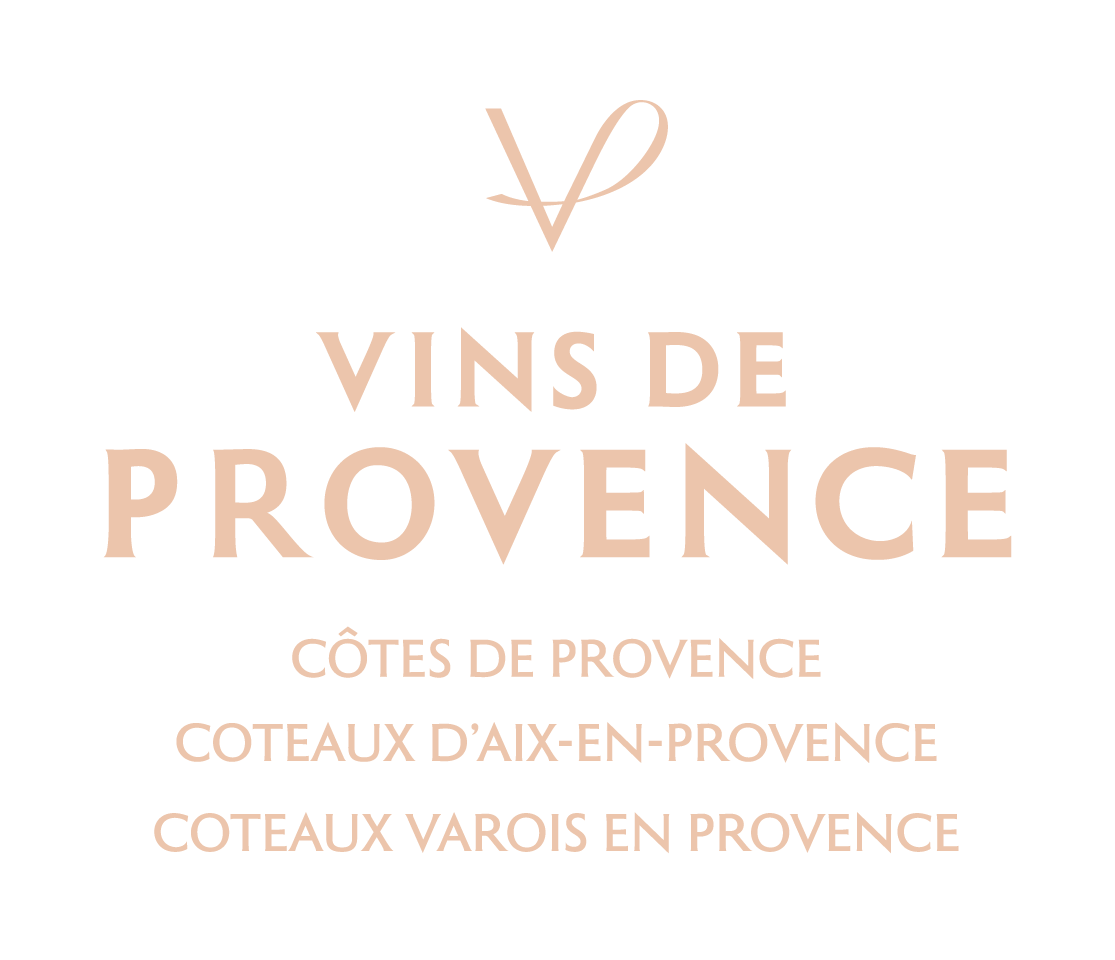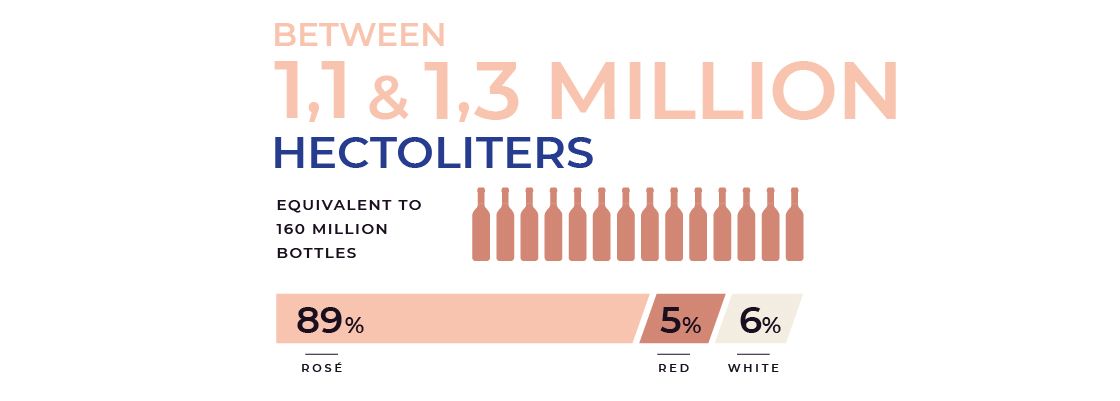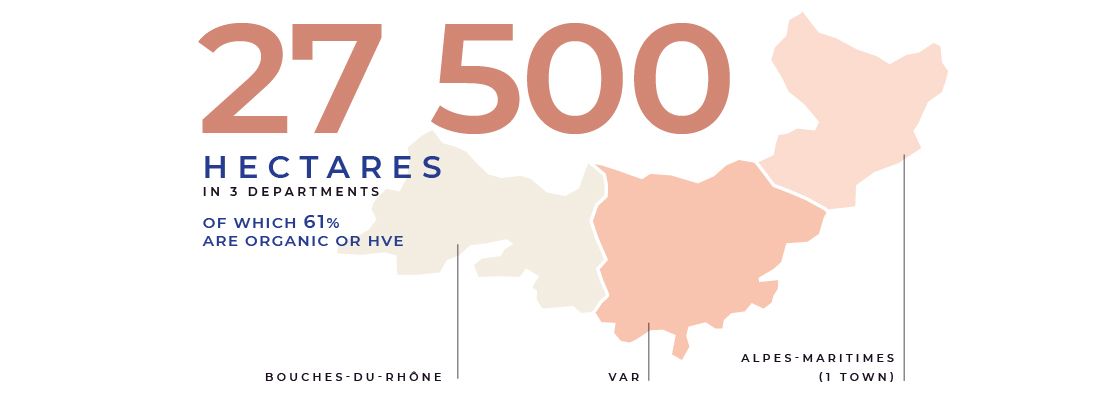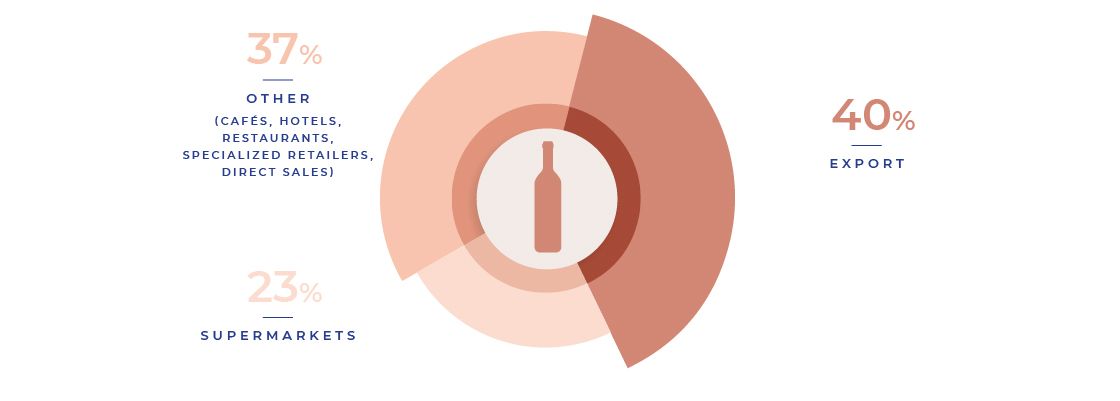General presentation
The Mediterranean and the Alps. Between these two wonders of natures, there is a third, this time man-made: the Provençal vineyard. Its dazzling, sun-drenched vines span 200 kilometres, crossing through the Var, Bouches-du-Rhône and part of the Alpes-Maritimes departments. Under the southern sun, the scenery is breath-taking. When you set foot among the vines, a holiday feeling floats through the air. This is assuredly why the grapes there are so gorgeous and its wines so delicious.
Provence
A picture-perfect terroir
The Provençal landscape is uniquely beautiful and the topography is unforgettable. The most remarkable sites include The Sainte-Victoire Mountain, the Sainte-Baume Mountains, the crystalline Massif des Maures and the volcanic Esterel Massif.
While the West and North parts of the wine region rest on a limestone bed sculpted by erosion, in the Eastern area, facing the sea, sit the crystalline Maures and Tanneron Massifs. The landscapes are made up of hills and small mountains with gentle curves, covered with shrubbery and forests. Continuing to the East, between Saint-Tropez and Cannes, this crystalline group is dotted with eruptive streaks with astonishing rocks like the colourful porphyry of the volcanic Esterel Massif.

Perfect soil for grapes
These two geological areas, made of limestone and crystal, correspond to two plant formations characteristic of the Mediterranean: the garrigue, on calcareous soil, and the maquis, on crystalline soil. Neither of these two types of vegetation creates substantial humus. As a general rule, the soil of wine-making Provence is poor, but well-drained. This shallow land, with no excess humidity, is ideal for the typically Mediterranean plant that is the grapevine.
The Mistral wind play with the sun
The Mediterranean climate is perfect: sunny, dry and warm. The grapevines can expect about 2,800 hours of sun each year. The winds are many and are an integral part of the region’s climate. The most violent and well-known of these is the Mistral. It is particularly dry, cools down the vineyards and, above all, protects them from humidity-related illnesses.

Varietals
More than a dozen varietals – or grape varieties – are used to make Provence AOP wines. Some of them form a foundation that can be found in the majority of the region’s wines, while others are more specific to certain appellations.
Over the course of the winter after each harvest, the recently-finished wines are assembled based on the qualities of each varietal, to obtain balanced wines.
In Provence, blending is a very old wine-making tradition.


More than a dozen varietals – or grape varieties – are used to make Provence AOP wines. Some of them form a foundation that can be found in the majority of the region’s wines, while others are more specific to certain appellations.
Over the course of the winter after each harvest, the recently-finished wines are assembled based on the qualities of each varietal, to obtain balanced wines.
In Provence, blending is a very old wine-making tradition.
Whites

Grape varieties
Whites
Reds and rosés

Grape varieties
Reds and rosés





